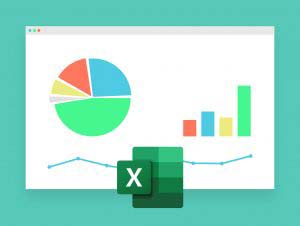Beginner to Advanced Microsoft Excel Training Course Online Certification

Most workplaces integrate Microsoft EXCEL and require a general understanding of this robust platform. Excel tools are often utilized in Software applications to upload user information, training records and more. SET Safety’s Compliance Software supports this functionality, as well as provides Excel output reporting in many ways.
The following information helps to provide a general understanding of Excel. Online training programs are available for interactive training for all levels.
What is Microsoft Excel?
Microsoft Excel is a spreadsheet that contains a grid of rows and columns that helps organize, summarize, and calculate data.
Where can we use Excel?
Spreadsheets are an everyday part of many professions, including accounting, statistical analysis, and project management used to record and analyze numerical and statistical data. Microsoft Excel provides multiple features to perform various operations like calculations, pivot tables, graph tools, macro programming, etc. One can use Excel to create business forms, such as invoices and purchase orders, among many other useful documents.
How to open an Excel document?
To open an excel, go to Start –> All Programs –> Microsoft Office –> Microsoft Excel.
Workbooks and Worksheets
- When excel opens, that file is termed as workbook and multiple sheets can be created in an excel/workbook.
- The sheets are called ‘Worksheets’.
- Each worksheet contains rows and columns and they form a grid structure.
- The intersection of every single column and row (every single column and row coordinates) makes up a CELL
- A cell can contain any of the following.
- A number (and any associated punctuation, such as decimal points, commas, and currency symbols).
- Text (including any combination of letters, numbers, and symbols that aren’t number-related).
- A formula, which is a math equation.
- A function, which is a named equation that shortcuts an otherwise complex operation.
- To create a workbook, Click on File ‘New’ and then click on ‘Blank Workbook’ to create a new workbook.
- By default, each workbook would have three worksheets named ‘Sheet1, Sheet2, Sheet3’
Basic tasks in Excel:
Following are some of the basic tasks that can be performed in Excel 2010.
- Creating a workbook and saving it, opening a saved workbook, closing an opened workbook.
- Create a worksheet, copying a sheet, hiding a sheet, re-arranging the sheet, Deleting the sheet.
- With respect to rows and columns Swapping of columns/rows, increase/decrease indent, insert one/more new rows/columns wherever required, merging cells.
- With respect to data Inserting data, select data, move data, delete data, Copy and paste data, cut the data and paste it elsewhere wherever it’s required, formatting data.
- Find and replace the data in a particular sheet or in the complete workbook.
- Spell check the whole book.
- Enabling sorting and filtering column wise that includes all types of filters like filtering based on formatting, colors and even custom filters that can be defined by the user himself.
- Other activities like, inserting objects like files as icon (referring a local file in this and adding it as icon), inserting textboxes, comments and special symbols etc can also be done.
Activities involved in Formatting cells:
Below are some of the activities that can be performed as a part of formatting the cells.
- We can set the type of the cell. We also can set fonts, text decoration, setting colours, borders and shades etc.
- The cells can be rotated and the text in it can be aligned either in left/right/middle (AND) top/middle/bottom
- Merging and wrapping of texts is possible too.
Activities involved in formatting worksheets:
The following are some of the formatting activities that can be done while printing the sheets.
- The margins of the sheet can be customized as and when required.
- The Page orientation can be provided.
- Header and footer can be inserted.
- Page breaks can also be provided.
- The background for the sheet can be set.
- There is also an option for freezing the panes.
- Conditional formatting -This feature enables one to format a range of values so that the values outside certain limits, are automatically formatted.
Advanced operations:
Some of the advanced operations that can be performed in excel are as follows.
- Using Functions (Both built-in functions and writing custom functions as per user’s needs)
- Making use of the existing formulae that covers various mathematical concepts.
- Selecting a range of cells (a group of cells is called a Range) and applying formulae and formatting to that specific range.
- Macros can be written and data in the excel can be computed.
- We can add graphics, can use themes and templates in worksheets.
- Dashboards can be created with excel options.
- A worksheet can be printed and emailed too.
- A worksheet can be translated as well.
- To protect data sensitivity, workbooks and sheets can be protected. A worksheet can be secured by making use of ‘Review ‘tab and ‘Protect sheet’ option.
- Excel provides three ways to protect a workbook.
- Requires a password to open the workbook.
- Prevents the users from adding sheets, deleting sheets, hiding sheets, and un hiding sheets.
- Prevents users from changing the size or position of windows.
- Data tables, pivot tables, simple and pivot charts help us create a statistical data and dashboard in Excel.
Conclusion:
In short, excel is widely used for the following advantages.
- Easy Arithmetic solutions.
- Formatting options
- Availability in cloud.
- Analysis with the help of charts.
- Its capability to bring huge data in one place.
With all the above-mentioned functionalities, Excel – thus has become a powerful tool, entrenched in business processes worldwide—whether for analysing stocks or issuers, budgeting, or organizing client sales lists, health care, human resource planning etc.
Beginner to Advanced Microsoft Excel Training Course Online Certification
- What is Microsoft Excel?
- Where can we use Excel?
- How to open an Excel document?
Best Online Excel Classes of 2021
- Continuously Improve for Safety Excellence
- Excel for Project Management
- Excel: Data Analysis with
Pivot Tables - Excel in 30 Minutes – Conditional Formatting
- Mastering Excel
- Excel Basics
References
https://support.microsoft.com/en-us/office/basic-tasks-in-excel-dc775dd1-fa52-430f-9c3c-d998d1735fca
https://www.tutorialspoint.com/excel/excel_explore_window.htm
https://edu.gcfglobal.org/en/excel201
